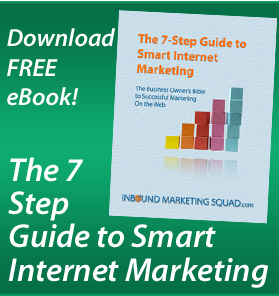 Inbound networking is a strategy that can reap many rewards for those business owners who use it consistently.
Inbound networking is a strategy that can reap many rewards for those business owners who use it consistently.
Rewards such as:
- More qualified web traffic
- Rapid rise in search engine rankings
- Less work
- Higher conversions
- Higher marketing ROI
How Does Inbound Networking Work?
It's a fairly simple strategy to understand. Rick Roberge first talked about this in his Rainmaker blog.
You combine inbound marketing with your existing business networks--both online and offline. Inbound marketing uses 5 strategies (content marketing, social media marketing, search marketing, lead nurturing and tracking/analysis). When you add in your offline business networking efforts — whether by sending customized emails with links of your blog posts/articles to your business associates or giving a talk that expands on a topic of one of your articles (which you of course, highlight during your talk) — your expertise is being exposed to a much larger network of people that will attract more qualified traffic to your website.
Most importantly, when you use the power of inbound marketing and combine it with the reach of business networking — you leverage not just your relationships, but your colleagues' relationships — systematically and with predictable results.
There are 2 ways to approach inbound networking -- one is informal and the other is formal (more structured). Let's take them one at a time. In this blog post we'll cover:
Informal Inbound Networking - Model 1
This is where you get a group of colleagues together (you need just 1 other person to get started and add more as you go) who agree to:
- Guest blog on each other's blogs on a regular basis, e.g. once a month.
- Cross-promote each other's content on all of your blogs (i.e. Bill writes a blog post citing Ann's blog on a topic that's relevant to his readers, Ann reciprocates by doing the same for Bill, ditto with other members).
- Use specific calls-to-action (CTA) in guest blog posts that convert visitors into leads for the author (Bill writes a guest blog post and incorporates a CTA that is an offer for a free eBook from him -- Ann publishes that on her blog, Ann does the same with Bill, ditto with other members).
- Bill and Ann (and other members) tweet, share and like each others' blog posts in their networks.
- Bill and Ann (and other members), send out custom emails to colleagues sharing another member's content that they know are relevant to those colleagues at that time because they just talked to them at a Chamber / BNI / Rotary meeting.
The success of this informal model relies on:
- Having a buyer persona that's common to all of you. Meaning your ideal clients all have the same characteristics in common. For example: first-time mothers who are also executives, couples remodeling their retirement home, etc.
- Each person remembering to write, publish and share unique blog content, and to create calls to action using whatever tools they prefer (form builders, social media sites, email programs, etc.), and doing so consistently.
The advantages of this model are:
- Get started immediately
- Freedom to use whatever tools you prefer
- You can easily add/drop members quickly
- Minimal expense to try the concept out. You can always upgrade to the formal model later.
The disadvantages of this model are:
- You're each trying to break through the SERPS (search engine page rankings) for keywords on your own -- and while having links point to each others' sites is wonderful and helps improve each site's individual authority -- it's still very slow going — especially for highly competitive keywords.
- You can't use the same content on each other's blogs — Google frowns on this and dings your site for doing it. Each blog post must be unique -- which means Bill has to write a different blog post for Steve, for Jim and for Sue, in addition to the one he wrote for Ann. That's more work for each member.
- No single person is responsible for orchestrating and coordinating content creation, publishing and sharing or that the quality of the content is equitable. Without content consistently being published and shared, the entire strategy falls apart.
- Because each person is using their own tools to manage their blog's content creation, publishing and sharing -- there is no common reporting mechanism that you can easily use to see what progress you're collectively making.
Related Posts:
- Inbound Networking: A Smart Solution for Very Small Business Owners
- Inbound Networking 101, Part 2: The Formal Inbound Networking Model








